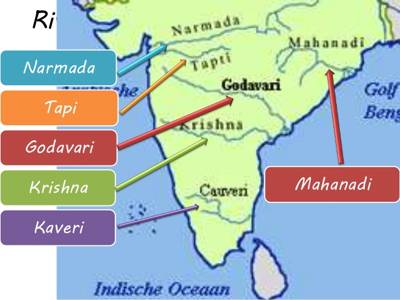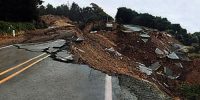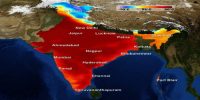The Evolution of Peninsular Drainage System
The Peninsular drainage system is older than the Himalayan one. Three major geological events in the distant past have shaped the present drainage systems of Peninsular India: (i) Subsidence of the western flank of the Peninsula leading to its submergence below the sea during the early tertiary period. Generally, it has disturbed the symmetrical plan of the river on either side of the original watershed. (ii) An upheaval of the Himalayas when the northern flank of the peninsular block was subjected to subsidence and the consequent trough faulting. The Western Ghats running close to the western coast act as the water divide between the major Peninsular Rivers, discharging their water in the Bay of Bengal and as small rivulets joining the Arabian Sea. The Narmada and The Tapi flow trough faults and fill the original cracks with their detritus materials. Hence, there is a lack of alluvial and deltaic deposits in these rivers. (iii) Slight tilting of the peninsular block from northwest to the southeastern direction gave orientation to the entire drainage system towards the Bay of Bengal during the same period.
Peninsular rivers are characterized by fixed course, absence of meanders, and non-perennial flow of water. The Narmada and the Tapi which flow through the rift valley are, however, exceptions.

Peninsular River System or Peninsular Drainage
- The peninsular drainage is mainly Concordant except for few rivers in the upper peninsular region.
- Peninsula Rivers are much older than the Himalayan Rivers.
- The peninsular drainage is mostly Concordant except for few rivers in the Upper Peninsula region.
- They are non-perennial rivers with an utmost release in the rainy season.
- The peninsular rivers have reached the mature stage and have almost reached their base level.
- The rivers are characterized by broad and superficial valleys.
- The river banks have gentle slopes except for a limited track where faulting forms steep sides.
- The main water divide in peninsular rivers is formed by the Western Ghats, which run from north to south close to the western coast.
- The velocity of water in the rivers and the load-carrying capacity of the streams is low due to the low gradient.
- Most of the major rivers of the peninsula such as the Mahanadi, the Godavari, the Krishna, and the Cauvery flow eastwards and drain into the Bay of Bengal. These rivers make deltas at their mouths.
Examples: The Jog on the Sharvati (289 m), Yenna of Mahabaleshwar (183 m), Sivasamundram on the Cauvery (101 m), Gokak on the Gokak (55 m), Kapildhara (23 m), and Dhuandar (15 m) on the Narmada are the major waterfalls in Peninsular India.















